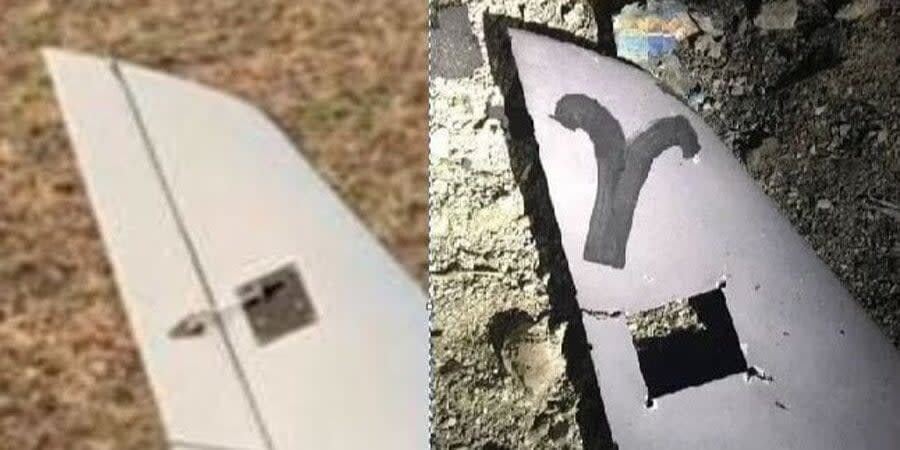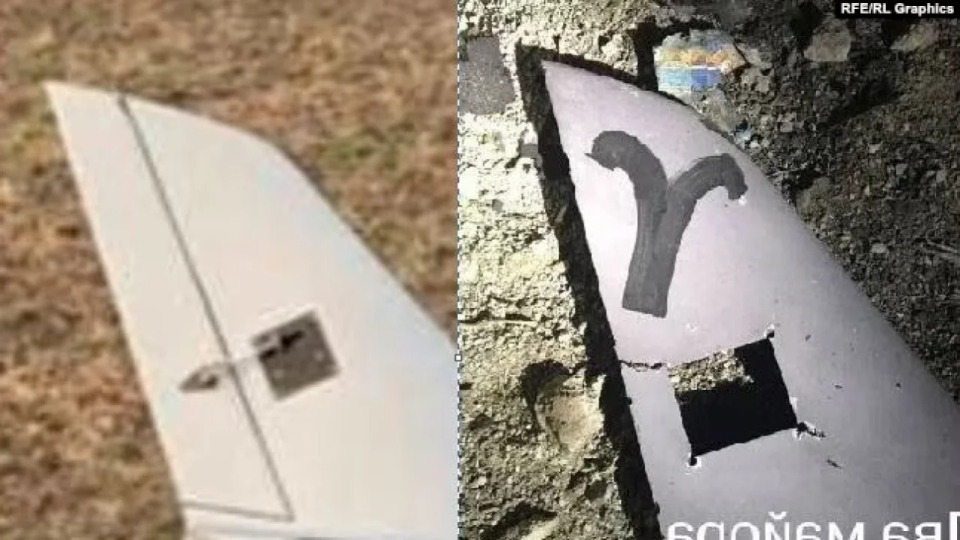What is known about drone attack in Crimea’s Dzhankoi

NV compiled the main information about the explosions and the aftermath.
There are also reports of damage to the locomotive depot, the stations security building, and warehouses storing goods, materials, and fuel.
Read also: Telegram channels report explosions near Simferopol, Sevastopol and Dzhankoy airfields
Blasts in Dzhankoi: details and aftermath
The first reports of explosions in Russian-occupied Dzhankoi appeared around 9 p.m. on March 20.
From photos and videos posted online, it appears that a series of explosions rocked Dzhankoi. The glow of fire was also visible.
The sound of a drone is heard in some footage, followed by shooting.
Dzhankoi’s occupying “administration,” in particular local gauleiter Igor Ivin, said the explosions in the city were caused by the “arrival of drones.”
He denied any damage had been done to the railway, military facilities, or Russian army equipment. Instead, Ivin spoke about alleged damage to a private house and “a fire at a grocery store.”
The so-called “head of Crimea,” Sergey Aksenov, also tried to downplay the scale of the incident, claiming that “air defense forces worked” in the Dzhankoi area, while not mentioning any hits at the railway station. According to him, “debris” (he did not specify what exactly) “damaged a private house and a store.”
Aksenov’s adviser Oleg Kryuchkov posted a photo of the wreckage of the allegedly downed UAV. Both officials reported that one local resident was injured in the attack.
Pro-Kremlin media, as usual, continue to spread contradictory information: blaming Ukraine for targeting “civilian objects” while at the same time claiming that the drone failed to reach its target, was shot down by air defense, and fell outside the Dzhankoi technical college.
Read also: Dzhankoy becomes Russia's largest military base in Crimea, says General Staff
Russian propaganda also said U.S.-made drones were used in the Dzhankoi attack, although it appears to be a modified Chinese SkyEye commercial drone, judging by photos of the wreckage posted by Radio Free Europe / Radio Svoboda.
“Previously, SkyEye was used as barrage munitions in the attacks on the refinery in Novoshakhtinsk (city in Russia’s Rostov Oblast) and the headquarters of the Black Sea Fleet in Sevastopol, which Ukraine was probably behind,” the report says.
Late on March 20, a few hours after the incident in the north of Russian-occupied Crimea, Ukraine Defense Ministry’s Main Intelligence Directorate (HUR) reported that the explosions in Dzhankoi “destroyed Russian Kalibr NK cruise missiles while they were being transported by rail.” Crimean occupation authorities hastened to deny this information.
The HUR reiterated that Kalibr NK are missiles designed for launches from surface ships of the Russian Black Sea Fleet. The range of such weapons is more than 2,500 kilometers against ground targets and 375 kilometers against sea targets.
Early on March 21, the invaders declared a municipal state of emergency in Dzhankoi, despite claims that there was no serious damage because of “the work of air defense.”
Dzhankoi’s locomotive depot, station security building, and warehouses that store goods, materials, and fuel at the train station were damaged, according to ASTRA’s sources. The grocery store at 51 Perekopska Street was also damaged.
The railway station attack led to outages in the locomotive depot’s power grid, ASTRA wrote.

What does Ukraine say about fresh blasts in Crimea
“Dzhankoi is a hub station,” Natalia Humeniuk, spokeswoman of the Southern Defense Forces, said early on March 21.
“And even at the beginning of the full-scale invasion, it was stated that the destruction of logistics would be the main means of influencing the reformation of enemy understanding of what to do in Crimea. Currently, the course is clearly indicated that it’s very necessary for them to leave by rail.”
Meanwhile, Ukraine’s Defense Ministry reiterated that “mysterious ‘bavovna’ (lit. ‘cotton’ in English, a euphemism used in Ukraine to describe an explosion in Russia — ed.) continues the process of Russia’s demilitarization and prepares the Ukrainian peninsula of Crimea for de-occupation.”
Read also: Masses of Russians queue to leave Crimea after explosions near Dzhankoy
Why is Dzhankoi important for the Russian invaders
All main railway routes in Crimea pass through Dzahnkoi, linking the peninsula with mainland Ukraine. Any serious damage to railway traffic through Dzhankoi could further complicate logistics for the occupying forces.
This would especially affect the provision of Russian army units that are holding the captured territories of southern Ukraine, as well as supply routes via the “land bridge” to Russia.
Dzhankoi also has an airfield that Russia’s occupying forces have turned into an air base.
It hosted the 39th helicopter regiment of the 27th mixed aviation division of the 4th Air Force and Air Defense Command of the Russian Army Southern Military District, where Russia deployed Mi-8, Mi-35M, Mi-28, and Ka-52 helicopters. There is no information about damage to the airfield because of the new explosions.
The explosions in Dzhankoi on March 20 continue a pattern of strikes on strategically important centres in occupied Crimea. On Aug. 16, 2022, powerful blasts hit an ammunition depot near Dzhankoi, while a transformer station caught fire in the city.
Following the incidents, media wrote that blasts in Crimea “demonstrated Moscow’s vulnerability and turned the peninsula into a new battlefield” in Russia’s war against Ukraine.
Read also: Ukrainian army reveals what Russians kept near Dzhankoy in Crimea
The short-term goal of such attacks is not so much the immediate return of Crimea, but the desire to undermine Russia’s ability to wage war in the south and east of Ukraine, the Wall Street Journal reported.
The Crimean strikes are Russia’s major strategic failure, “which relies on the peninsula as a bridgehead to support its military operations in the southern territories of Ukraine seized in the early days of the war,” said the Washington Post.
“Russian warships patrol Crimea’s coasts and Russian warplanes fly from its territory, transformed by eight years of occupation into a fortress,” the New York Times said in August 2022.
“President Vladimir V. Putin has called Crimea a ‘sacred place,’ Russia’s ‘holy land,’ and one of his top advisers has warned that if the peninsula were attacked, Ukraine would face ‘Judgment Day.’ But lately, Ukraine has been calling the Kremlin’s bluff.”
We’re bringing the voice of Ukraine to the world. Support us with a one-time donation, or become a Patron!
Read the original article on The New Voice of Ukraine

